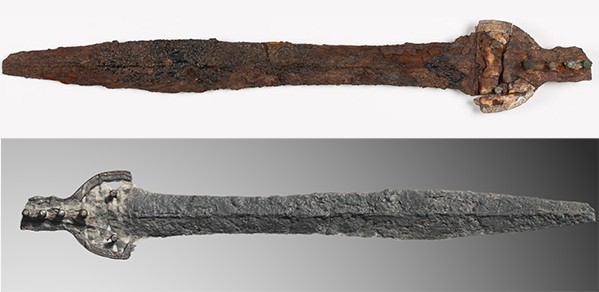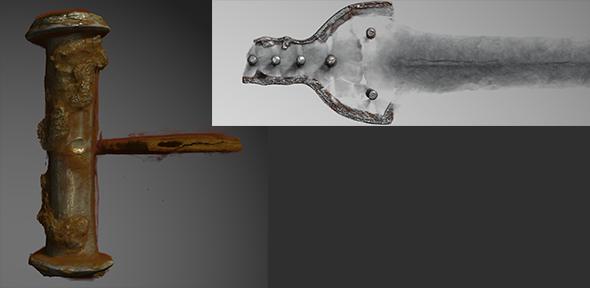
The internal structure of an Iron Age sword has been understood for the first time, thanks to scientific imaging and analysis techniques involving a Cambridge engineer, resulting in a virtual dissection of the artefact.
This has been a fascinating project to be involved in. I enjoyed paying careful attention to getting as much detail as possible into the 3D visualisation process, allowing you to see things that have not been seen for a very long time and in a way that has not been possible before.
Professor Graham Treece
The Tamassos Sword is a silver studded iron sword dating from the 6th century BC, discovered in Tomb 12 of the early Iron Age necropolis of Tamassos, in central Cyprus.
While extensive research on the sword, undertaken at the Fitzwilliam Museum in 1998–99, revealed more about its physical components, less was known about how each component was made and how the sword would have been assembled – until now.
Helping to ‘peel back’ the layers of the sword using micro-computed tomography (micro-CT) is Professor Graham Treece, from the Department of Engineering’s Medical Imaging Group, part of the Machine Intelligence Laboratory. Micro-CT is a non-destructive imaging tool that enables the visualisation of materials of different densities.
Using a visualisation and analysis package for 3D imaging data1, Professor Treece was able to create hi-res 3D images of the sword showing the internal structure of the artefact, as well as the various components of its decorated, flat, semicircular hilt section with rectangular grip.
From these images, composed of 2D trans-axial projections or ‘slices’, more could be learned about the condition of the iron, for example, and what technologies may have been employed to transform a bar of iron into the leaf-shaped blade and hilt section that we see today. On closer inspection, the micro-CT imaging also revealed silver-headed copper alloy rivets with silver heads holding the carved ivory plates onto the hilt. The edges of the iron hilt were decorated with sheet metal: two thin layers of silver lie over a layer of tin.
This cutting-edge research has shed new light on the materials and technologies used by ancient craftspeople and provides insights into the relationship between the people and communities who lived on the Mediterranean Islands.
The Tamassos Sword was on display at the Fitzwilliam Museum earlier in the summer as part of an exhibition titled Islanders: The Making of the Mediterranean. The sword is now located in the Fitzwilliam Museum's Cypriot Gallery.
Professor Treece said: “The Tamassos Sword has been a fascinating project to be involved in. I enjoyed paying careful attention to getting as much detail as possible into the 3D visualisation process. The ability to make a difference in this way, and get the absolute best out of the data, allows you to see things that have not been seen for a very long time and in a way that has not been possible before.”

LEFT: A zoomed-in fragment of one of the silver-headed copper alloy rivets using Micro-CT. TOP RIGHT: A zoomed-in section of the micro-CT image shown at the top of the page. The steel has been faded out to reveal silver-plated parts. Credit: Professor Graham Treece.
---
1 Stradview, the visualisation and analysis package used for generating the 3D images, is written by Professor Treece and Professor Andrew Gee, also from the Medical Imaging Group.

